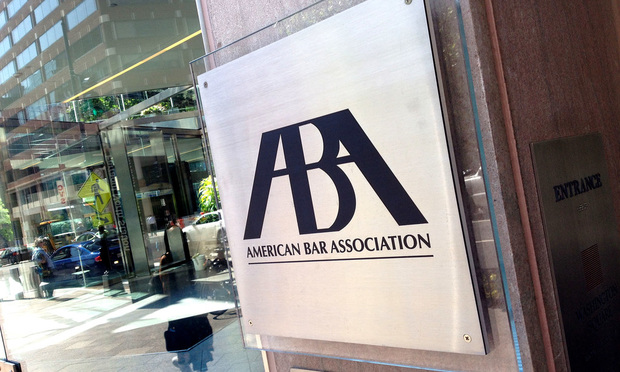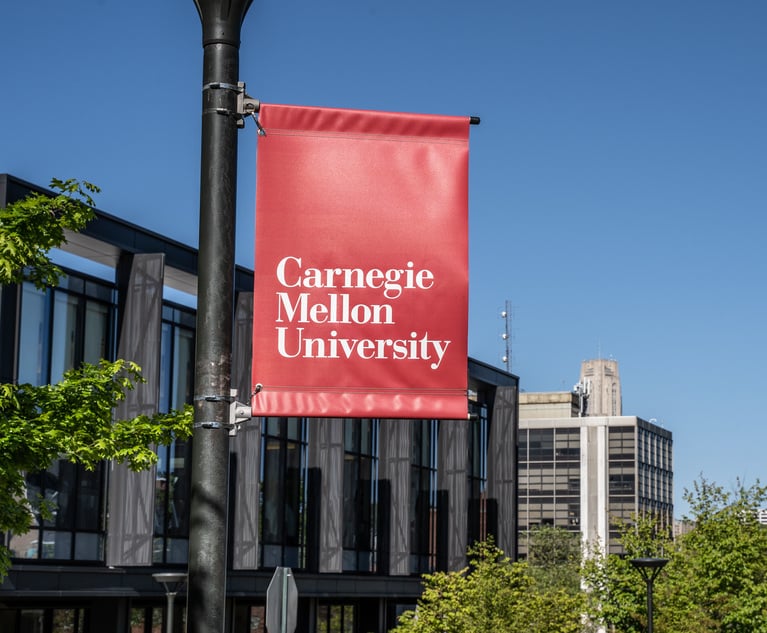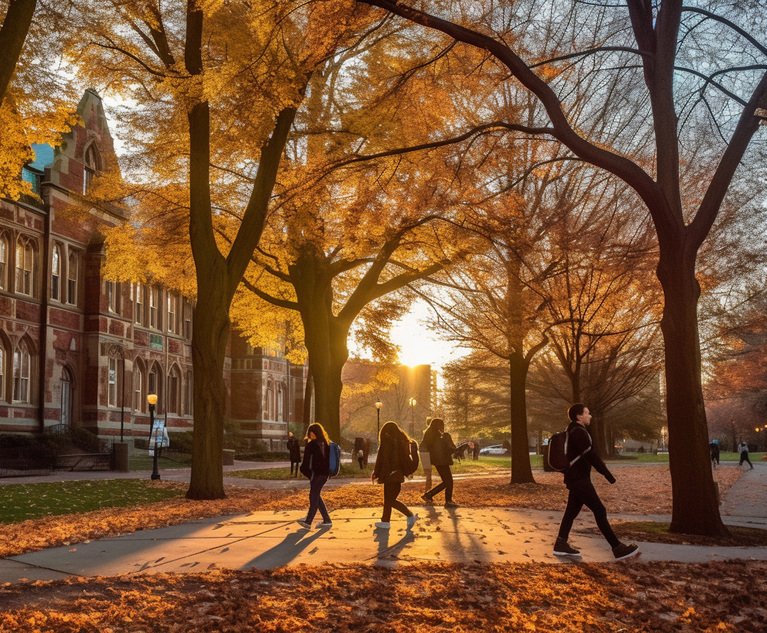As US Law Schools See First Real Enrollment Gains Since 2010, Most Pa. Schools Keep Pace
Nationwide, first-year law student enrollment is up 3 percent, fueling hope that legal education's fortunes are turning around after an eight-year slump.
December 19, 2018 at 11:29 AM
6 minute read
The original version of this story was published on Law.com
 Photo: Diego M. Radzinschi
Photo: Diego M. Radzinschi
Overall new student enrollment at the nation's law schools increased 3 percent this fall, according to figures released by the American Bar Association on Dec. 14, and the majority of Pennsylvania law schools saw gains either at or above the national average.
The 3 percent jump nationwide represents the first measurable increase in the size of the first-year class since 2010—when new enrollment peaked at more than 52,000. The number of new law students at ABA-accredited law schools fell 29 percent between 2010 and 2015, before leveling off at about 37,000 for the next three years. This fall, 38,390 new students showed up on campus, which is 1,070 more than the previous year.
Duquesne University School of Law in Pittsburgh saw the biggest enrollment bump of any Pennsylvania school, growing its 2018 first-year class to 188 students from 148 students a year ago—an increase of more than 27 percent.
Penn State's two law schools—Penn State Law in University Park and Dickinson Law in Carlisle—saw the second- and fourth-highest enrollment gains for Pennsylvania law schools this fall, at nearly 7 percent (119 students to 127) and 4 percent (73 students to 76), respectively.
Villanova University Charles Widger School of Law took the third spot, with enrollment growth of 5 percent (175 to 183 students).
Meanwhile, University of Pennsylvania Law School grew enrollment by nearly 3 percent (244 students to 251), Drexel University Thomas R. Kline School of Law by 2 percent (151 students to 154) and Temple University's Beasley School of Law by about 1.5 percent (223 students to 226).
University of Pittsburgh School of Law and Widener University Commonwealth Law School, on the other hand, were the only Pennsylvania law schools to see enrollment drop this fall. Pitt Law's enrollment decreased by just under 8 percent (141 students to 130) and Widener Commonwealth's enrollment dropped by nearly 9 percent (128 students to 117).
In a statement, Pitt Law Dean Amy Wildermuth said the class size decrease was intentional, ”as part of a multi-year, data-driven plan that reflects a deep investment from, and partnership with, the provost and chancellor of the University of Pittsburgh.”
“The plan takes into account data that we have collected around, among other things, the anticipated career opportunities for our grads both regionally and nationally in an ever-changing market; the qualities that produce the most successful grads of Pitt Law; and the requirements for delivering the best, cutting-edge legal education and experiences for our students,” Wildermuth said in the statement. “At a smaller size, we believe we will be better able to fulfill our promise to our graduates that that they will have the kinds of career opportunities that they expected when selecting Pitt Law. A reduction in our class size also allows us to focus our selection process to ensure we are able to attract the best-qualified candidates for Pitt Law.”
Wildermuth also said lower enrollment would allow for smaller class sizes and more personalized education as the school seeks to institute a curriculum focused on preparing students “to understand and use technology to their advantage, to be an effective team member on cross-discipline teams, to become expert decision-makers and problem-solvers, and to serve and engage deeply with their communities.”
John Benfield, associate dean of admissions and administration at Widener Law Commonwealth, meanwhile, noted in an emailed statement that, while this year's enrollment decreased as compared to last year, it's “still way up from the numbers for the entering class in 2015, 2014, and 2013.”
“It is important to note that the increase class size from fall 2015 to fall 2016 was approximately 62 percent,” Benfield said. “This increase in class size was done while also maintaining and protecting the class profile, median LSAT and GPA. For fall 2017, the entering class was again increased while protecting the profile. In fall 2018, the class size was reduced, but again the profile was maintained. While much was reported of the increased applications for 2018, a closer look at the pool of applicants shows that the increase in test takers and applicants occurred at the upper LSAT percentiles.”
The nationwide enrollment boost is welcome news for legal academics, who for years have hoped in vain for a turnaround in legal education's fortunes. Waning interest in a law degree forced many schools to reduce the size of their faculties and make other cutbacks. Five schools have closed in recent years or will soon shut down.
The 3 percent increase in new law students this year isn't unexpected. Applicants to law school surged 8 percent last year, according to the Law School Admission Council, fueling speculation that law school is once again a hot ticket. The Trump administration and discord in Washington are contributing to the added interest in legal education, according to deans and admissions officers.
Some schools appear to have utilized the larger applicant pool as an opportunity to be more selective about the students they admit, said Jerome Organ, a professor at the University of St. Thomas School of Law who studies enrollment trends. Put another way, schools opted to admit fewer students than they could have, given the increase in applicants in order to bring in classes with higher Law School Admission Test scores and undergraduate grades, he said.
Still, the boost in applicants caught some law schools by surprise. Some ended up with larger 1L classes than intended, which is a reversal from the days when admissions offices were scrambling to fill up seats. More than half of schools—122—reported an increase in the size of their first-year class, while 81 schools told the ABA that their 1L class is smaller than in 2017.
It's not just J.D. programs that gained in popularity this year. Enrollment in non-J.D. programs, which includes LL.M. and masters programs, grew more than 8 percent from 2017.
This content has been archived. It is available through our partners, LexisNexis® and Bloomberg Law.
To view this content, please continue to their sites.
Not a Lexis Subscriber?
Subscribe Now
Not a Bloomberg Law Subscriber?
Subscribe Now
NOT FOR REPRINT
© 2025 ALM Global, LLC, All Rights Reserved. Request academic re-use from www.copyright.com. All other uses, submit a request to [email protected]. For more information visit Asset & Logo Licensing.
You Might Like
View All
LSAT Administrator Sues to Block AI Tutor From Using ‘Famous, Distinctive’ Test Prep Materials
3 minute read
Disjunctive 'Severe or Pervasive' Standard Applies to Discrimination Claims Against University, Judge Rules
5 minute read
From 'Confusing Labyrinth' to Speeding 'Roller Coaster': Uncertainty Reigns in Title IX as Litigators Await Second Trump Admin
6 minute readTrending Stories
- 1'It's Not Going to Be Pretty': PayPal, Capital One Face Novel Class Actions Over 'Poaching' Commissions Owed Influencers
- 211th Circuit Rejects Trump's Emergency Request as DOJ Prepares to Release Special Counsel's Final Report
- 3Supreme Court Takes Up Challenge to ACA Task Force
- 4'Tragedy of Unspeakable Proportions:' Could Edison, DWP, Face Lawsuits Over LA Wildfires?
- 5Meta Pulls Plug on DEI Programs
Who Got The Work
Michael G. Bongiorno, Andrew Scott Dulberg and Elizabeth E. Driscoll from Wilmer Cutler Pickering Hale and Dorr have stepped in to represent Symbotic Inc., an A.I.-enabled technology platform that focuses on increasing supply chain efficiency, and other defendants in a pending shareholder derivative lawsuit. The case, filed Oct. 2 in Massachusetts District Court by the Brown Law Firm on behalf of Stephen Austen, accuses certain officers and directors of misleading investors in regard to Symbotic's potential for margin growth by failing to disclose that the company was not equipped to timely deploy its systems or manage expenses through project delays. The case, assigned to U.S. District Judge Nathaniel M. Gorton, is 1:24-cv-12522, Austen v. Cohen et al.
Who Got The Work
Edmund Polubinski and Marie Killmond of Davis Polk & Wardwell have entered appearances for data platform software development company MongoDB and other defendants in a pending shareholder derivative lawsuit. The action, filed Oct. 7 in New York Southern District Court by the Brown Law Firm, accuses the company's directors and/or officers of falsely expressing confidence in the company’s restructuring of its sales incentive plan and downplaying the severity of decreases in its upfront commitments. The case is 1:24-cv-07594, Roy v. Ittycheria et al.
Who Got The Work
Amy O. Bruchs and Kurt F. Ellison of Michael Best & Friedrich have entered appearances for Epic Systems Corp. in a pending employment discrimination lawsuit. The suit was filed Sept. 7 in Wisconsin Western District Court by Levine Eisberner LLC and Siri & Glimstad on behalf of a project manager who claims that he was wrongfully terminated after applying for a religious exemption to the defendant's COVID-19 vaccine mandate. The case, assigned to U.S. Magistrate Judge Anita Marie Boor, is 3:24-cv-00630, Secker, Nathan v. Epic Systems Corporation.
Who Got The Work
David X. Sullivan, Thomas J. Finn and Gregory A. Hall from McCarter & English have entered appearances for Sunrun Installation Services in a pending civil rights lawsuit. The complaint was filed Sept. 4 in Connecticut District Court by attorney Robert M. Berke on behalf of former employee George Edward Steins, who was arrested and charged with employing an unregistered home improvement salesperson. The complaint alleges that had Sunrun informed the Connecticut Department of Consumer Protection that the plaintiff's employment had ended in 2017 and that he no longer held Sunrun's home improvement contractor license, he would not have been hit with charges, which were dismissed in May 2024. The case, assigned to U.S. District Judge Jeffrey A. Meyer, is 3:24-cv-01423, Steins v. Sunrun, Inc. et al.
Who Got The Work
Greenberg Traurig shareholder Joshua L. Raskin has entered an appearance for boohoo.com UK Ltd. in a pending patent infringement lawsuit. The suit, filed Sept. 3 in Texas Eastern District Court by Rozier Hardt McDonough on behalf of Alto Dynamics, asserts five patents related to an online shopping platform. The case, assigned to U.S. District Judge Rodney Gilstrap, is 2:24-cv-00719, Alto Dynamics, LLC v. boohoo.com UK Limited.
Featured Firms
Law Offices of Gary Martin Hays & Associates, P.C.
(470) 294-1674
Law Offices of Mark E. Salomone
(857) 444-6468
Smith & Hassler
(713) 739-1250






